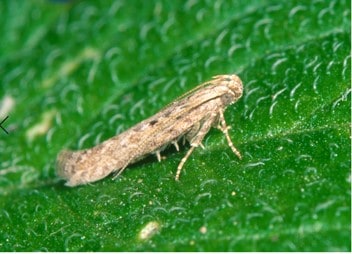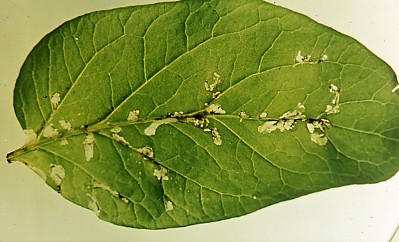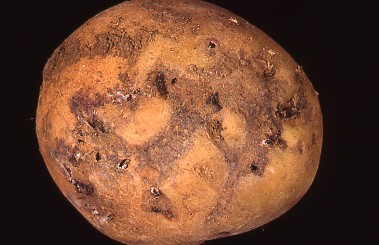This article is informed by extracted writing from A literature review for Potatoes New Zealand, by Dr Paul Horne, IPM Technologies Pty Ltd, July 2020.
As Spring and Summer roll towards potato growers, so too do the myriad of pest and disease management activities. One of the greatest challenges especially for growers in the Pukekohe area, is the control of Potato Tuber Moth (PTM). The increasingly dry periods we have seen in recent seasons, exacerbate the problem, with cracks in the earth providing plenty of opportunity for tuber infection.
Potatoes New Zealand’s recently completed PTM literature review looks at the various control approaches to this pest and suggests an integrated approach to PTM management.
PTM originated in South America and has now been recorded in over 90 countries.
PTM feeds on a range of food plants, mainly those in the family Solanaceae. The main crops attacked are potato (Solanum tuberosum), tomato (Solanum lycopersicum or Lycopersicon esculentum), and tobacco (Nicoitana tabacum). In the case of potato, larvae of PTM feed either on tubers or within the leaves of potato plants. PTM is primarily a potato field pest. Harvested tubers are not so at risk, if they are kept well protected in cool stores.
PTM is believed to not develop when temperatures are constantly below 10°C, however some studies found the lower threshold for development ranging between 4.25°C and 13.5°C.
Although there is a wide host range, potato, followed by eggplants are the preferred hosts on which the female moths lay their eggs.



The leaf-mining aspect makes them difficult to control with many insecticides. This is in part because of where they feed but also because of insecticide resistance. Biological controls have had mixed success and can be affected by UV or rain washing them off parasitoids (introduced insects) are often affected by the insecticide programs applied to control the moths and other insects, so add to the complexity of an integrated approach. PTM has shown it develops rapid resistance to control using the virus granulosis. Nematodes can be effective but are yet to be commercially produced.
Although current methods of control rely heavily on the use of pesticides, reviews suggest that early control of this pest should focus on cultural methods. Such methods have been known for many years and include variety selection, deeper planting of seed, producing a large hill, irrigation to prevent soil cracking and early harvest. Rowe (1993) states in a manual on potato production (in the USA) that “the moths cannot reach tubers covered with more than 2 inches of soil, unless it is deeply cracked”. Goldson and Emberson (1985) recommended that in New Zealand deeper planting should be done to help control PTM. Some of the best-known work on cultural control of PTM was conducted in New Zealand by Marion Foot (1974, 1976). Other cultural controls include elimination of cull piles, controlling volunteer potatoes, and rolling (Rondon 2010).
Researchers have repeatedly stressed that if cultural controls (in particular soil management and irrigation) are ignored then pesticide applications in the foliar stages of the crop cannot be expected to provide acceptable levels of control. This research has been conducted and confirmed in New Zealand as well as in other countries.
The need to adopt an Integrated Pest Management strategy that involves using all three control options; biological; cultural; and chemical control; and not just a reliance on pesticides during crop growth is imperative.In a recent (2019) article in Potatoes Australia magazine, a grower described his experience of using IPM, starting in 1995. His conclusion to the article is the most telling, where he states, “In the last 20 years I have used fewer insecticide applications on all paddocks than I might have used in a single season per crop before IPM”. However the complexity of integrated control programs in New Zealand is exacerbated by the need to control Tomato Potato Psyllid as well as the Potato Tuber Moth.
The PNZ literature review can be read in full on our website here.
The Potatoes Australia article can be found here
Potatoes New Zealand is contracting Plant & Food Research to screen a Pukekohe population of Potato Tuber Moth for resistance to 9 different commonly use insecticides. These will be tested via direct contact with both the moth and the larvae and indirectly by spraying the potato leaf and introducing the moth and larvae. The results of these tests will be published in October/November. Further populations of PTM will be collected and screened in the coming season in order to detect regional differences in resistance.


